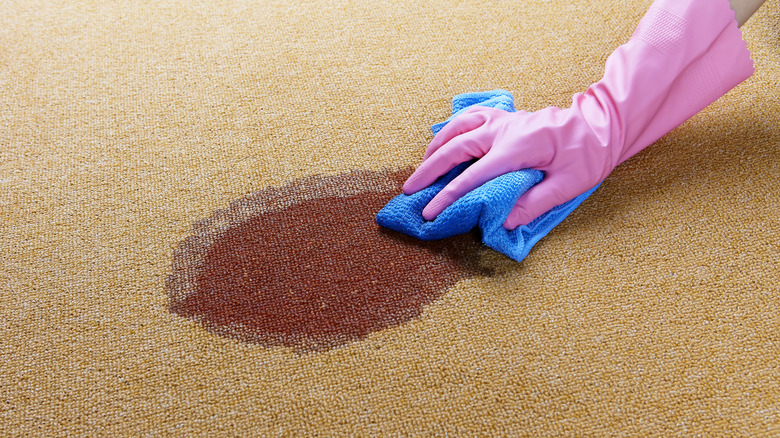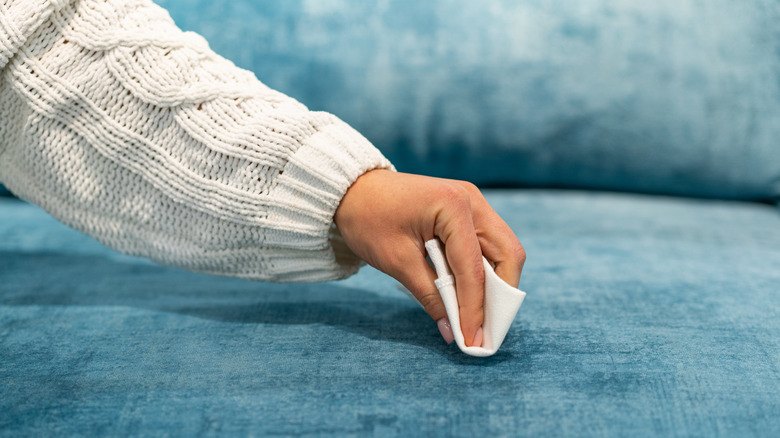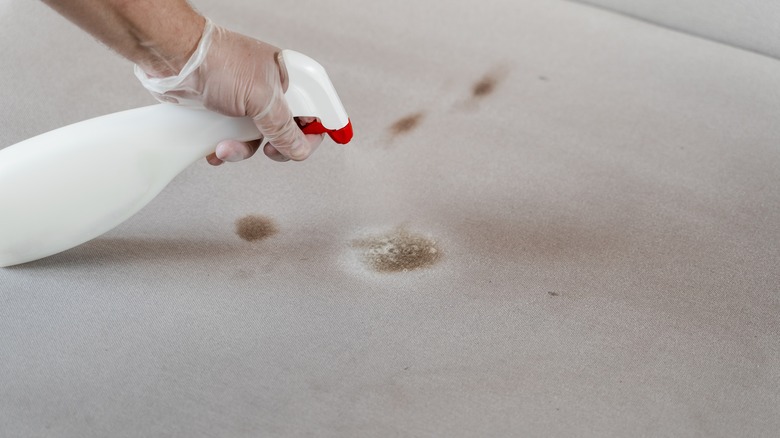This One Product Easily Removes Blood Stains From Clothes And Furniture
Look, blood stains happen — whether you sliced your finger while chopping vegetables or broke your coffee mug and tried to pick up the pieces. It's especially annoying if it's gotten onto clothing or upholstery and can seem impossible to clean, thanks to its ability to set in quickly. Also, dry cleaning and professional upholstery services are spectacularly expensive. But there's one household product that can pull the crimson right out of fabric — hydrogen peroxide.
That's because when hydrogen peroxide battles with blood, it comes in contact with an enzyme called catalase. This chemical combination causes oxidization, and the bonds in the blood start to release from the fabric fibers. Once you've applied this chemical to the stain, you should be able to see it lift almost instantly. It truly is a powerhouse stain remover. And pro tip: hydrogen peroxide also does wonders against red wine stains, so it's great to have a bottle on hand if you're planning a dinner party.
How to use hydrogen peroxide correctly
While hydrogen peroxide is excellent at removing stains, you also want to be careful with it. So to apply it properly, use the mantra "You can add more, but you can't take it back." One option is to apply the hydrogen peroxide to the corner of a rag and squeeze out the excess before lightly dabbing at the stain. If you don't want to sacrifice a rag for the stain clean-up, a disposable Q-tip or cotton swab will also work. Be sure to dab and not scrub, as that can drive the stain deeper into the fabric rather than lift it out.
Once the hydrogen peroxide comes in contact with the enzymes in the blood, it might make a little fizzle noise, which just means it's working. Let it soak for a few minutes before trying to wipe it away. If the stain still isn't fully lifted, give it an extra dab and try again.
Extra tips for hydrogen peroxide and stain removal
Although hydrogen peroxide is often used on cuts and scrapes, it can irritate your skin if exposed for an extended period, according to the Agency for Toxic Substances and Disease Registry. For that reason, use disposable gloves to keep your hands protected. And before you use it on a visible area, such as a shirt, couch cushion, or carpet, try it on a hidden spot just in case it causes discoloration.
Also, even if the stain is removed, blood isn't something you want sticking around on your clothes or furniture, so you need to follow up the hydrogen peroxide treatment with a bit of regular cleaning. If it's a clothing item, or if your furniture cover can be removed, be sure to toss it in the laundry machine on a sanitization cycle. Otherwise, give the affected area a scrub with some dish soap and baking soda, then dab it with piping hot water. Be sure not to soak the area — it will take a long time to dry, and it can even lead to mold and mildew in your cushions.


